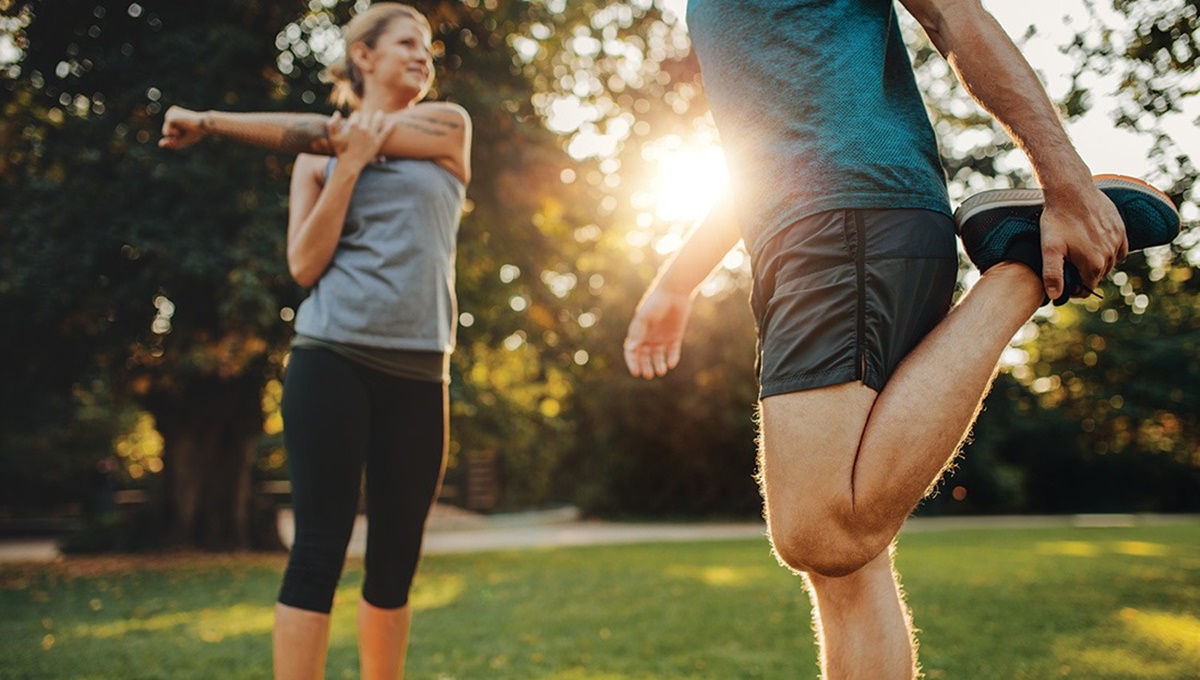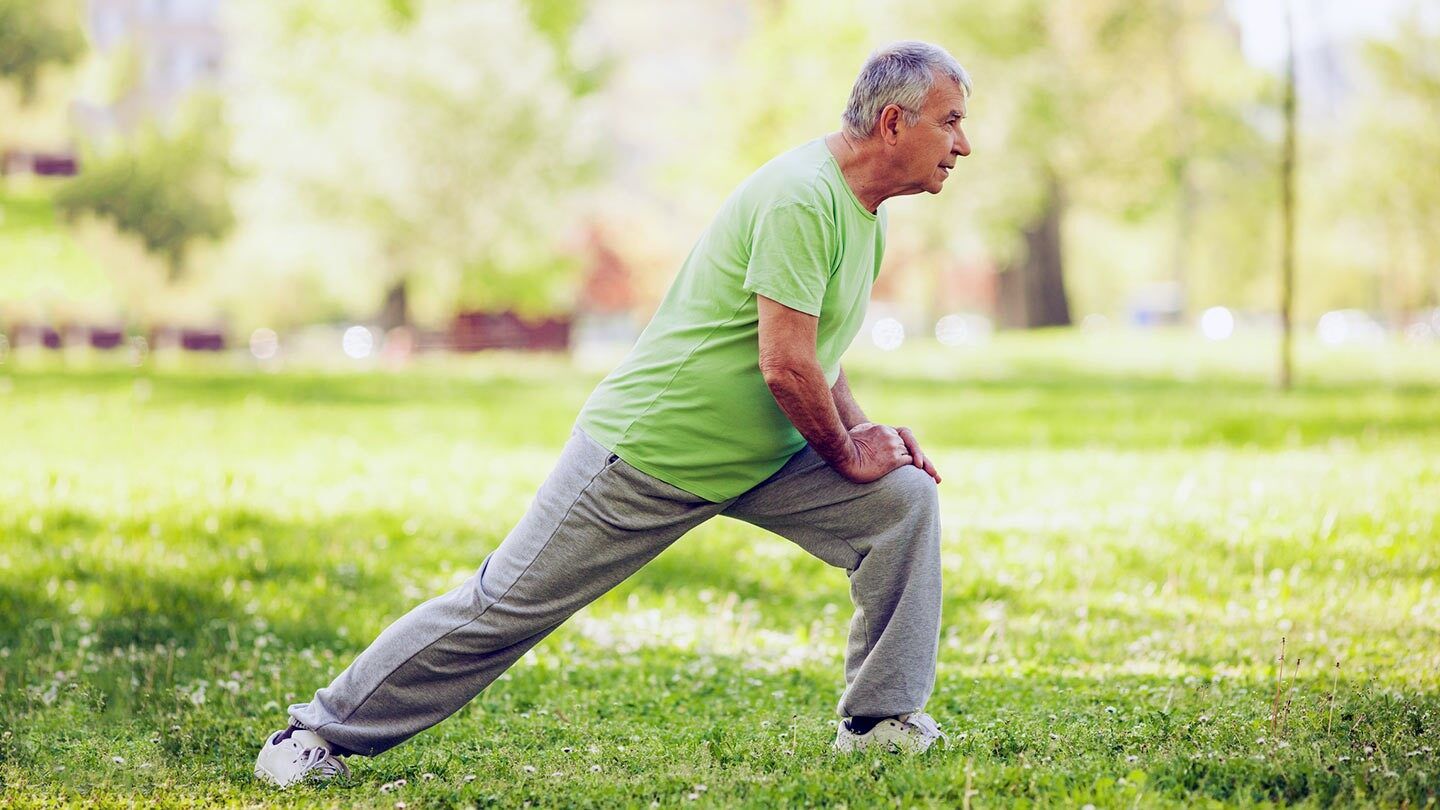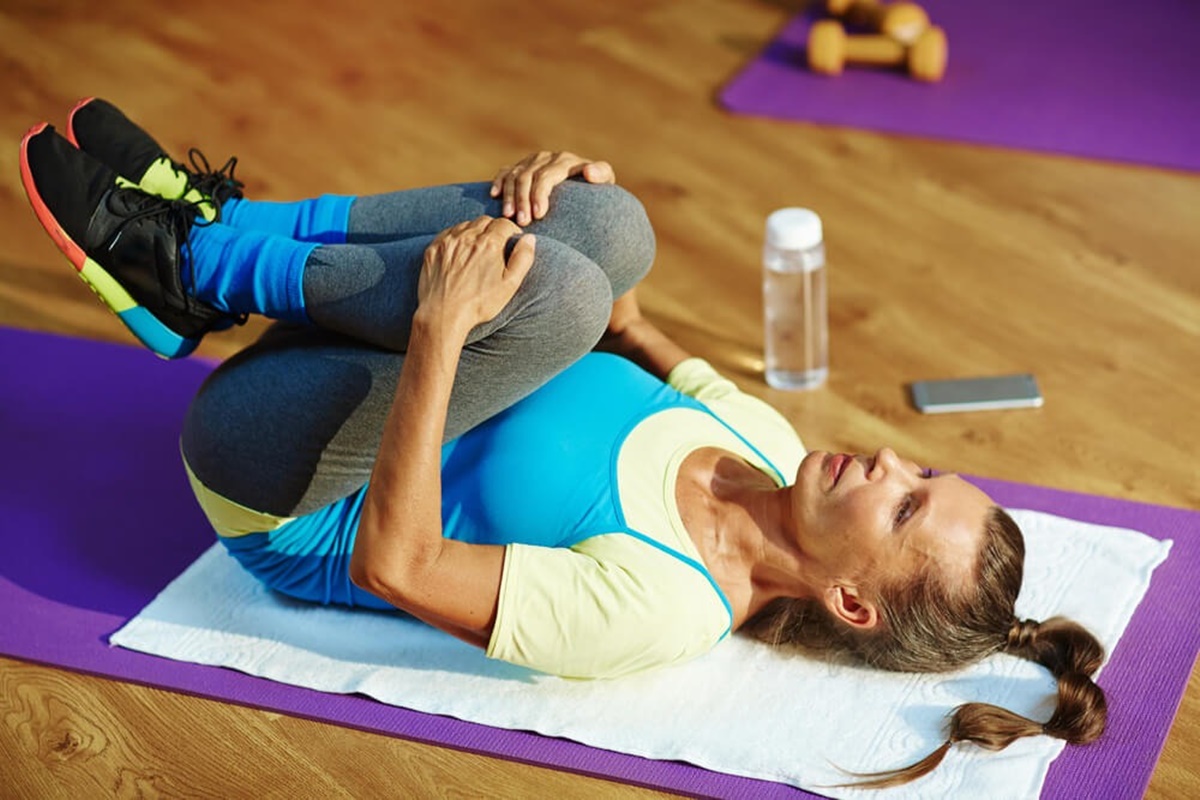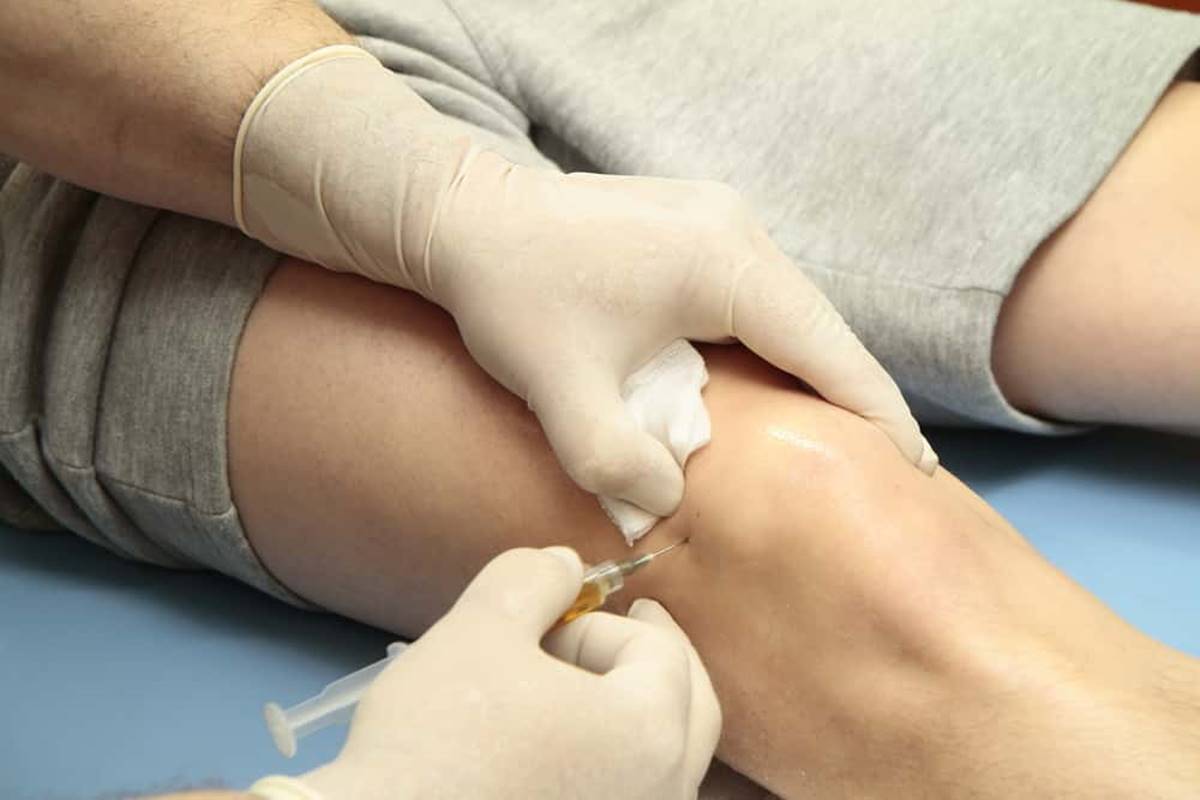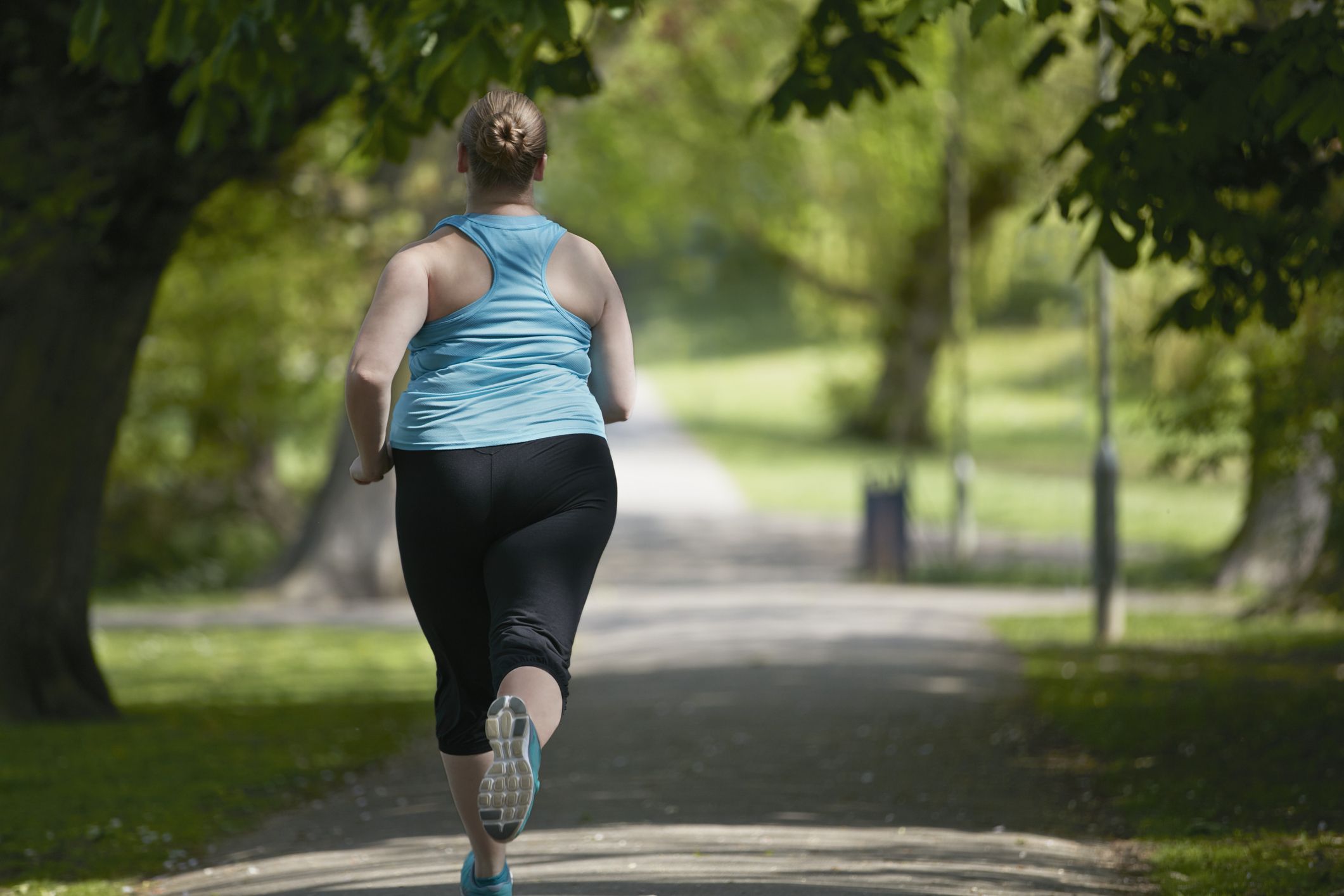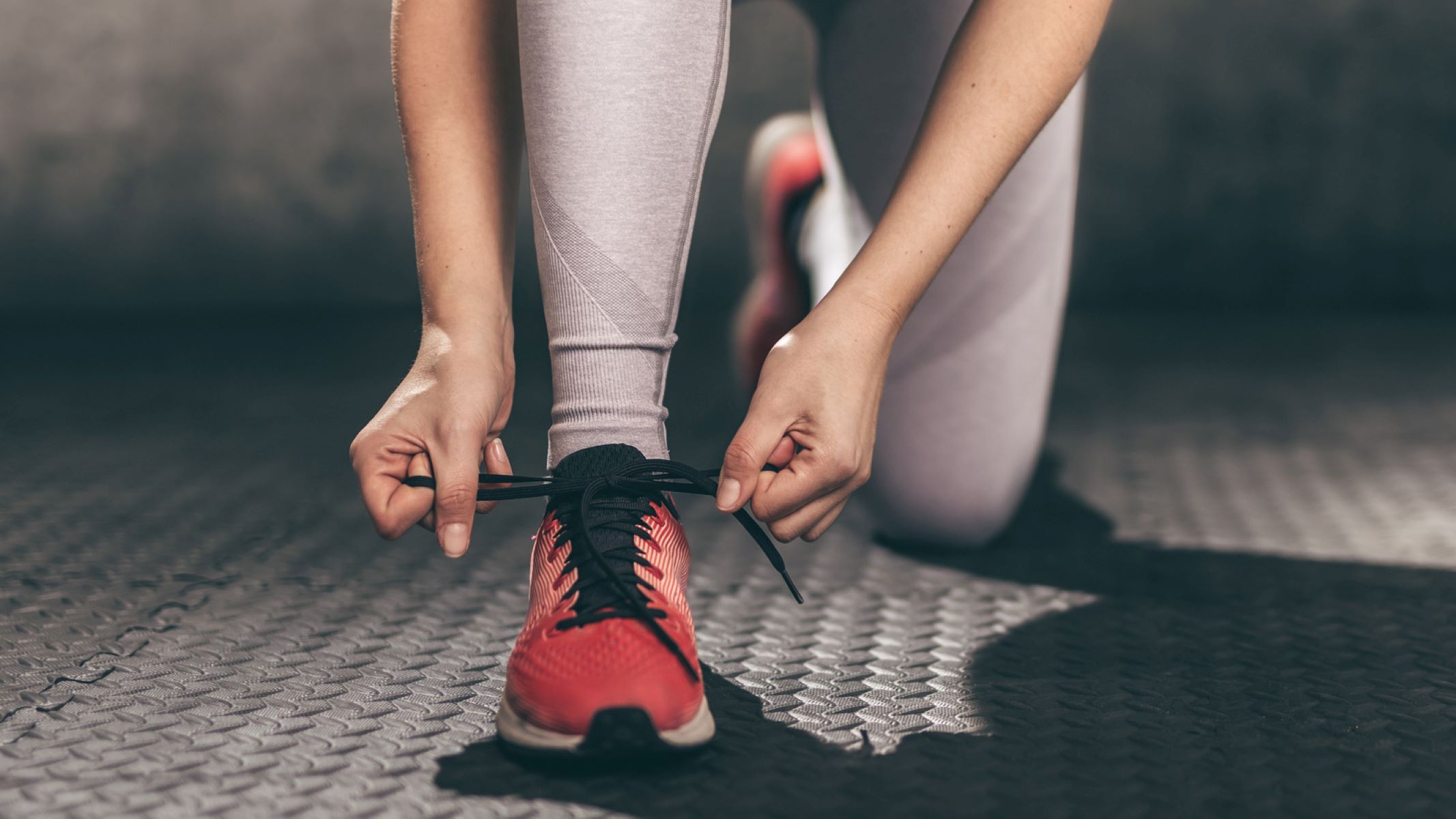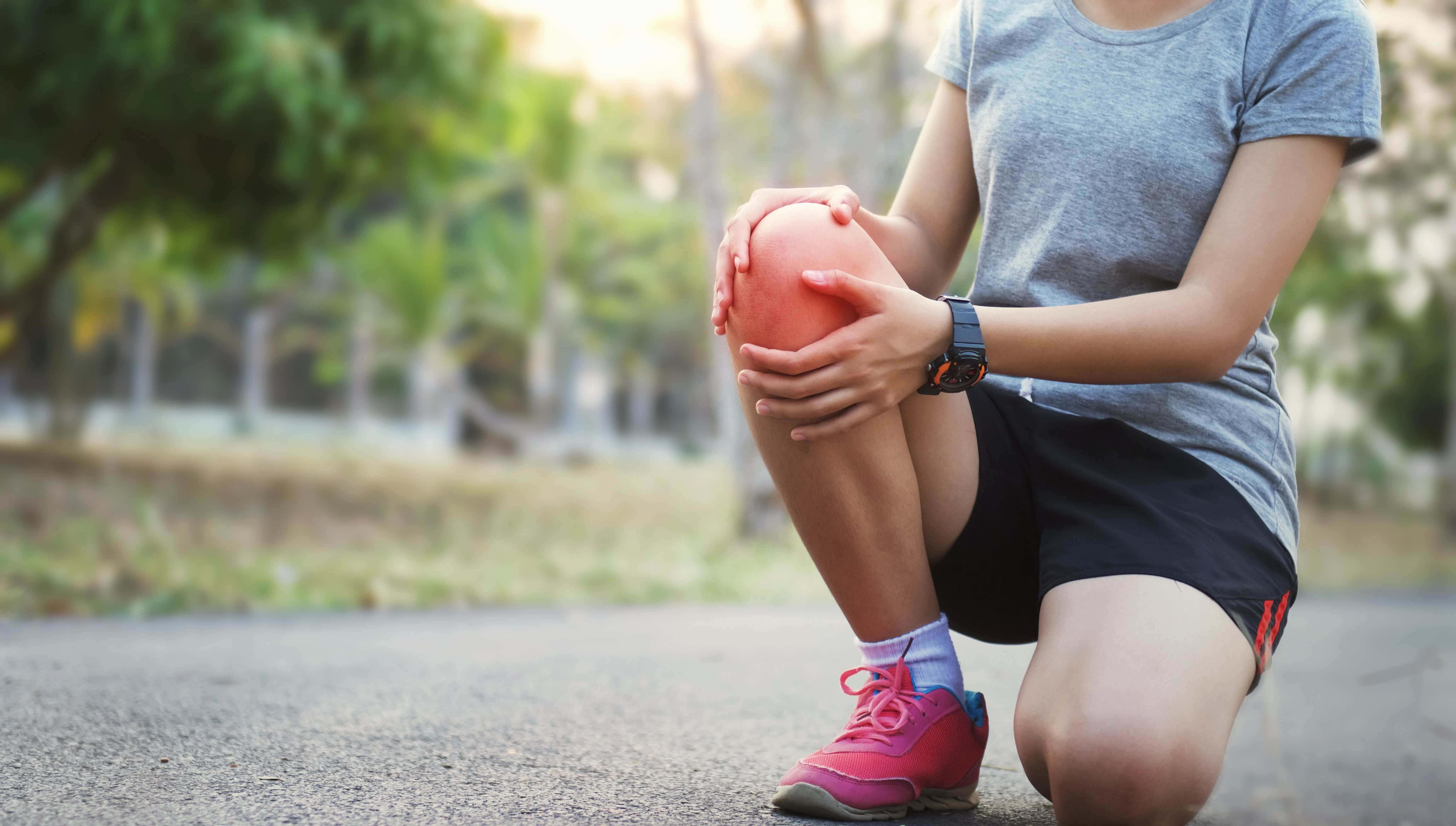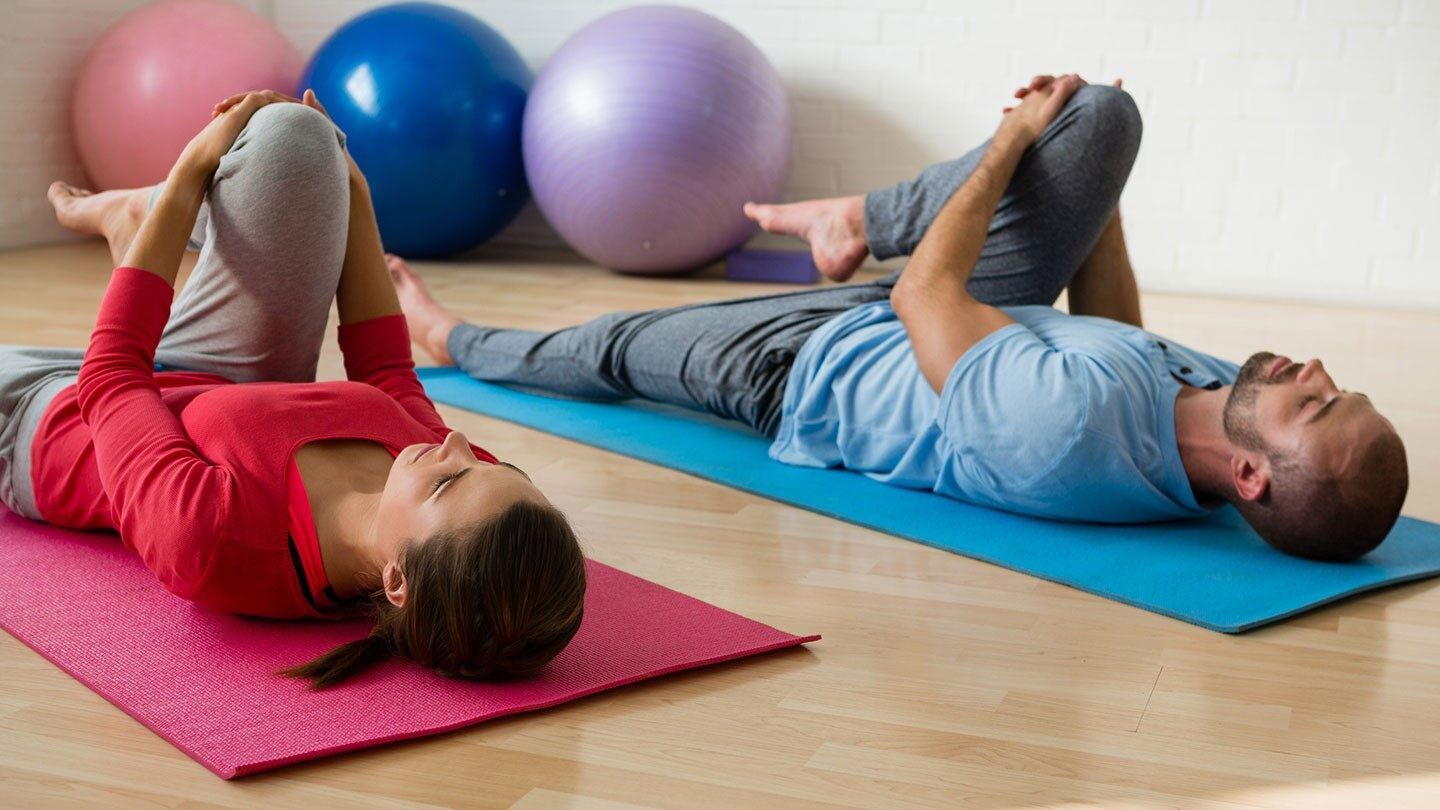Home>Misc>Featured>What Is The Best Exercise For Osteoarthritis Of The Knee
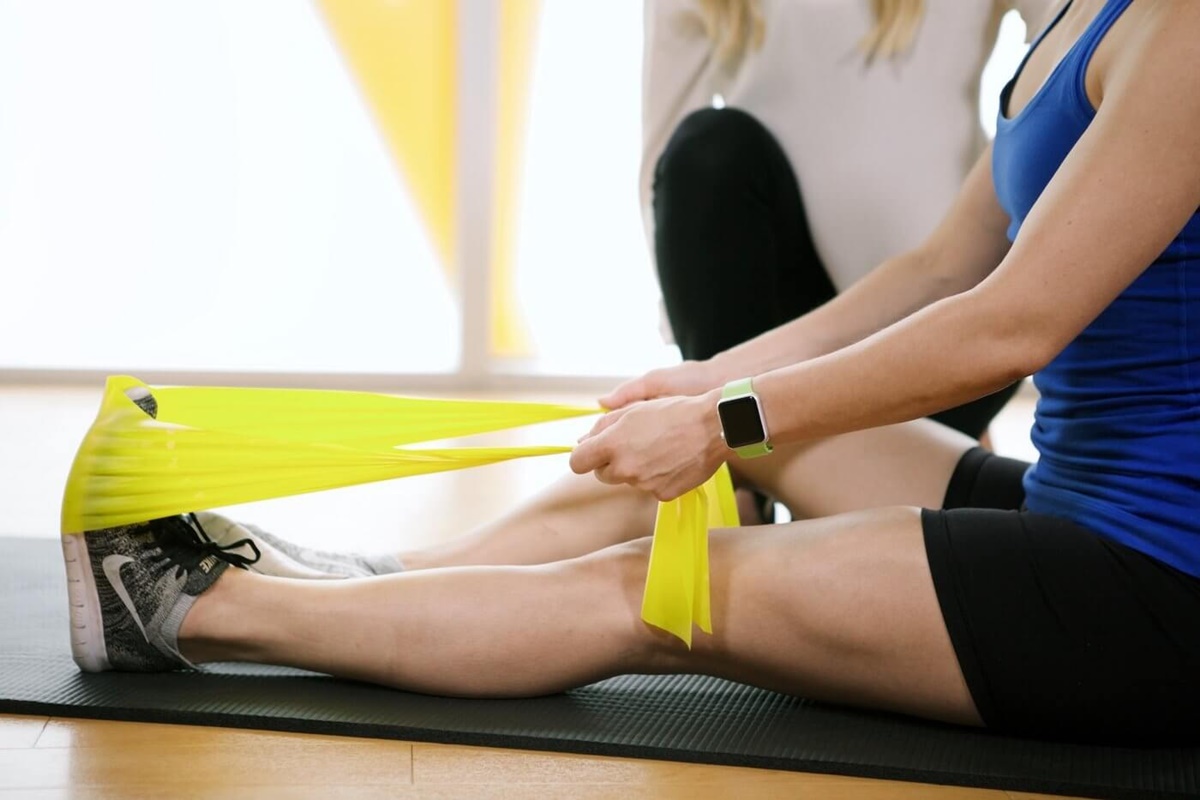

Featured
What Is The Best Exercise For Osteoarthritis Of The Knee
Modified: January 22, 2024
Discover the featured exercise for Osteoarthritis of the knee and take control of your condition. Improve mobility and reduce pain with this effective workout.
Introduction
Welcome to our comprehensive guide on the best exercises for osteoarthritis of the knee. If you or a loved one is living with this condition, you understand the challenges it can present in daily life. Osteoarthritis is a degenerative joint disease that affects millions of people worldwide, causing pain, stiffness, and reduced mobility in the affected joints. While there is no cure for osteoarthritis, there are ways to manage the symptoms and improve quality of life.
Exercise is a crucial component in the management of osteoarthritis. In fact, it has proven to be one of the most effective non-pharmacological interventions, providing a range of benefits for individuals with this condition. Engaging in the right types of exercises can help reduce joint pain, improve joint flexibility and strength, and enhance overall function.
However, it’s important to note that not all exercises are created equal when it comes to osteoarthritis of the knee. The key is to find exercises that are low-impact, gentle on the joints, and provide maximal benefits. In this guide, we will explore the various types of exercises that are most beneficial for osteoarthritis of the knee, as well as provide tips for exercising safely and effectively.
Whether you are a beginner or have been dealing with osteoarthritis for years, this guide will equip you with the information you need to develop a tailored exercise program that suits your needs. By incorporating these exercises into your routine, you can take control of your osteoarthritis and improve your knee health and overall well-being.
So, let’s dive in and discover the best exercises for osteoarthritis of the knee!
Understanding Osteoarthritis of the Knee
Osteoarthritis of the knee is a degenerative joint disease that primarily affects the knee joints. It occurs when the cartilage that cushions the bones in the knee joint gradually breaks down, leading to pain, stiffness, and reduced range of motion. This condition is commonly associated with aging, but it can also be caused by injury, overuse, or other underlying factors.
When the cartilage deteriorates, the bones in the knee joint may start rubbing against each other, causing pain and inflammation. As a result, individuals with osteoarthritis may experience difficulty with activities such as walking, climbing stairs, or even standing for prolonged periods.
The symptoms of osteoarthritis of the knee can vary from person to person, but common signs include pain, swelling, stiffness, and a grating sensation when moving the knee. These symptoms can worsen over time if left untreated, impacting an individual’s quality of life and overall mobility.
There are several risk factors that can increase the likelihood of developing osteoarthritis of the knee. Age is a significant factor, as the risk of developing this condition increases as we get older. Additionally, obesity can put excess stress on the joints, leading to cartilage damage. Other risk factors include previous knee injuries, heredity, and certain occupations that involve repetitive stress on the knee joints.
Diagnosing osteoarthritis of the knee typically involves a combination of a physical examination, medical history review, and imaging tests such as X-rays or MRI scans. It’s crucial to consult with a healthcare professional to receive an accurate diagnosis and appropriate treatment plan.
While there is currently no cure for osteoarthritis, there are various treatment options available to manage the symptoms and improve the function of the knee joint. These options may include medication, physical therapy, assistive devices, and lifestyle modifications. Among the recommended treatments, exercise is considered a cornerstone for managing osteoarthritis of the knee.
By understanding the underlying mechanisms of osteoarthritis of the knee, we can develop a holistic approach to managing the condition. Next, we will delve into the importance of exercise in alleviating the symptoms of osteoarthritis and explore the best types of exercises for optimal knee health.
Causes and Symptoms of Osteoarthritis
Osteoarthritis is a complex condition that can have various causes and present with different symptoms. It is essential to understand the factors that contribute to the development of osteoarthritis and recognize the signs and symptoms to seek appropriate treatment.
The primary cause of osteoarthritis is the breakdown of the cartilage that cushions the ends of the bones in a joint. Over time, this cartilage deteriorates, leading to bone-on-bone contact and subsequent pain and inflammation. There are several factors that can contribute to the breakdown of cartilage in the knee joint:
- Age: As we age, the natural wear and tear on the joints can lead to cartilage damage and osteoarthritis.
- Obesity: Excess weight puts added stress on the knee joints, accelerating the breakdown of cartilage.
- Joint injury: Previous injuries, such as ligament tears or fractures, can increase the risk of developing osteoarthritis in the affected joint.
- Genetics: Some individuals are more predisposed to developing osteoarthritis due to inherited traits that affect joint health.
- Joint misalignment: Abnormal joint anatomy or alignment can cause uneven wear on the cartilage, leading to osteoarthritis.
- Repetitive stress: Certain occupations or activities that involve repetitive movements or excessive stress on the knee joints can contribute to cartilage damage over time.
The symptoms of osteoarthritis can vary in severity and may worsen over time. Common signs and symptoms of osteoarthritis of the knee include:
- Pain: Persistent joint pain, particularly during or after physical activity or periods of inactivity, is a common symptom of osteoarthritis.
- Stiffness: Individuals with osteoarthritis may experience stiffness in the knee joint, especially after periods of rest or inactivity.
- Swelling: Inflammation in the knee joint can cause swelling and tenderness.
- Reduced range of motion: Osteoarthritis can limit the ability to fully bend or straighten the knee, resulting in a reduced range of motion.
- Cracking or popping sounds: Some individuals may experience a cracking or popping sensation in the knee joint during movement.
- Weakness: Muscular weakness around the knee joint is common in individuals with osteoarthritis.
It’s important to note that symptoms can vary from person to person, and some individuals may experience more severe symptoms than others. If you are experiencing any of these symptoms or suspect you may have osteoarthritis, it is crucial to consult with a healthcare professional for an accurate diagnosis and appropriate treatment plan.
Now that we have a better understanding of the causes and symptoms of osteoarthritis, let’s explore the importance of exercise in managing this condition and improving knee health.
Importance of Exercise for Osteoarthritis
Exercise plays a vital role in the management of osteoarthritis. While it may seem counterintuitive to engage in physical activity when experiencing joint pain, exercise has been proven to provide numerous benefits for individuals with osteoarthritis of the knee.
One of the primary reasons exercise is crucial for osteoarthritis is its ability to improve joint function and reduce pain. Regular exercise helps strengthen the muscles surrounding the knee joint, providing better support and stability. As a result, this can help relieve pressure on the joint itself and reduce pain during movement.
Exercise also helps improve joint flexibility and range of motion. Osteoarthritis can cause stiffness in the knee joint, making it challenging to perform day-to-day activities. Engaging in exercises that target joint mobility can help increase flexibility, allowing for smoother movements and improved functionality.
Beyond the direct impact on the knee joint, exercise also offers other benefits for overall health and well-being. Regular physical activity helps manage weight, which is particularly important for individuals with osteoarthritis. Excess weight puts added stress on the knee joints, exacerbating pain and potentially accelerating joint degeneration. By engaging in exercise and maintaining a healthy weight, individuals can reduce the strain on their joints and slow the progression of osteoarthritis.
Exercise is also beneficial for cardiovascular health. Certain types of exercises, such as low-impact aerobic activities, can improve heart health, increase endurance, and enhance overall fitness levels. This is particularly important for individuals with osteoarthritis, as a healthy cardiovascular system can support physical activity and improve overall quality of life.
Furthermore, exercise has been shown to have positive effects on mental health. Osteoarthritis can cause feelings of frustration, depression, and anxiety due to the limitations it imposes on daily activities. Regular exercise releases endorphins, also known as “feel-good” hormones, which can improve mood and reduce stress. Additionally, participating in group exercise programs or engaging in physical activity with others can provide social support and a sense of belonging, helping individuals cope with the challenges of living with osteoarthritis.
Overall, exercise is a crucial component in managing osteoarthritis of the knee. By incorporating the right types of exercises into a daily routine, individuals can experience reduced pain, improved joint function, enhanced overall health, and an increased quality of life.
Now that we understand the importance of exercise for osteoarthritis, let’s explore the different types of exercises that are most beneficial for individuals with this condition.
Types of Exercise for Osteoarthritis of the Knee
When it comes to managing osteoarthritis of the knee, engaging in the right types of exercises is crucial. Not all exercises are suitable for individuals with this condition, as high-impact or strenuous activities can worsen joint pain and damage. The key is to focus on exercises that are low-impact, gentle on the joints, and provide maximum benefits.
Here are some of the most effective types of exercises for osteoarthritis of the knee:
- Low-Impact Aerobic Exercises: Low-impact aerobic exercises, such as walking, swimming, cycling, or using an elliptical machine, are highly recommended for individuals with osteoarthritis. These exercises increase cardiovascular fitness and strengthen the muscles around the knee joint without putting excessive stress on the joints.
- Strength Training Exercises: Strengthening the muscles around the knee joint is crucial for providing support and stability. Exercises that target the quadriceps, hamstrings, and calf muscles, such as leg presses, squats, lunges, and calf raises, can help improve joint function and alleviate knee pain.
- Range of Motion Exercises: Range of motion exercises aim to improve joint flexibility and reduce stiffness. Simple movements such as knee bends, leg swings, and ankle pumps can help maintain and improve the range of motion in the knee joint.
- Water Exercises: Water exercises, also known as aquatic therapy or hydrotherapy, are excellent for individuals with osteoarthritis. The buoyancy of water reduces the weight-bearing stress on the joints while providing resistance for muscle strengthening. Water aerobics, swimming, or even simply walking in a pool can be beneficial.
- Tai Chi and Yoga: Gentle mind-body exercises like Tai Chi and yoga can improve balance, flexibility, and joint function. These exercises focus on controlled movements, deep breathing, and relaxation techniques, promoting overall well-being and reducing stress.
- Walking and Cycling: Walking is a simple and accessible exercise that can be easily incorporated into daily routines. It helps strengthen leg muscles and provides cardiovascular benefits. Cycling is also an excellent low-impact exercise that strengthens the muscles around the knee joint while minimizing joint stress.
- Flexibility Exercises: Stretching exercises that target the muscles and tendons around the knee joint can improve flexibility and relieve tension. Gentle stretches like quadriceps stretches, hamstring stretches, and calf stretches can be done regularly to promote joint health.
It’s important to note that before starting any exercise program, it is advisable to consult with a healthcare professional or a qualified exercise specialist. They can provide personalized recommendations based on your specific condition, fitness level, and any other individual considerations.
Now that we have explored the different types of exercises, let’s delve into the specific exercises that are considered the best for osteoarthritis of the knee.
Benefits of Exercise for Osteoarthritis
Engaging in regular exercise is not only important for managing the symptoms of osteoarthritis but also offers a multitude of benefits for individuals with this condition. By incorporating appropriate exercises into your routine, you can experience significant improvements in joint health, overall physical well-being, and quality of life.
Here are some key benefits of exercise for osteoarthritis of the knee:
- Pain Reduction: Exercise has been shown to reduce joint pain associated with osteoarthritis. By strengthening the muscles around the knee joint, exercise provides better support and stability, reducing the pressure on the joint surfaces and alleviating pain.
- Improved Joint Function: Regular exercise helps improve joint function and range of motion. Exercises that target flexibility and joint mobility help reduce stiffness and allow for smoother movements, making it easier to perform daily activities.
- Increased Muscle Strength: Strengthening the muscles around the knee joint is essential for providing better joint stability. Exercise helps strengthen the quadriceps, hamstrings, and other leg muscles, leading to improved function and reduced risk of falls or injuries.
- Weight Management: Maintaining a healthy weight is crucial for individuals with osteoarthritis. Excess weight puts added stress on the knee joints, exacerbating pain and accelerating joint degeneration. Regular exercise, combined with a balanced diet, can help manage weight and reduce the strain on the joints.
- Better Cardiovascular Health: Certain types of exercise, such as low-impact aerobic activities, improve cardiovascular fitness, enhance endurance, and promote overall heart health. A healthy cardiovascular system supports physical activity and improves overall well-being.
- Enhanced Mental Well-being: Exercise has numerous mental health benefits. It releases endorphins, also known as “feel-good” hormones, which can improve mood, reduce stress, and alleviate symptoms of depression and anxiety that may be associated with living with osteoarthritis.
- Improved Sleep: Regular exercise has been shown to promote better sleep quality. Getting enough restorative sleep is essential for overall health and helps manage pain and inflammation associated with osteoarthritis.
- Increased Overall Quality of Life: Engaging in regular exercise not only improves physical health but also boosts confidence, increases energy levels, and enhances overall quality of life. It allows individuals to maintain their independence, engage in daily activities, and participate in social and recreational pursuits.
It’s important to remember that the benefits of exercise for osteoarthritis are not instantaneous. Consistency is key, and it may take time to see significant improvements. It’s crucial to start slowly, gradually increase intensity or duration, and listen to your body. If you experience any unusual or excessive pain, it’s essential to modify or stop the exercise and consult with a healthcare professional.
Now that we understand the benefits of exercise for osteoarthritis, let’s explore the factors to consider before starting an exercise program.
Factors to Consider Before Starting an Exercise Program
Before starting an exercise program for osteoarthritis of the knee, there are several important factors to consider. These factors will help ensure that the exercises you choose are safe, effective, and suitable for your specific needs and condition. Here are some key considerations:
- Consult with a Healthcare Professional: It is essential to consult with a healthcare professional or a qualified exercise specialist before starting any exercise program. They can provide personalized recommendations based on your specific condition, fitness level, and any other individual considerations.
- Your Specific Symptoms and Limitations: Consider the severity of your symptoms and any limitations you may have. Certain exercises may not be suitable if you have significant pain or limited range of motion. Tailor your exercise program to accommodate your specific needs and gradually increase the difficulty as tolerated.
- Exercise Tolerance: Take into account your current fitness level and exercise tolerance. Start with gentle, low-impact exercises and gradually increase the intensity or duration as your fitness improves. Push yourself, but listen to your body and avoid overexertion or excessive pain.
- Existing Health Conditions: If you have any other health conditions or medical concerns, it’s important to consider how they may impact your exercise program. Some exercises may be contraindicated or require modifications if you have cardiovascular issues, joint instability, or other underlying health conditions.
- Proper Form and Technique: Learn the proper form and technique for each exercise to ensure safety and effectiveness. Improper form can lead to injury or exacerbate joint pain. It may be helpful to work with a qualified exercise professional initially to learn the correct techniques and progress independently afterward.
- Gradual Progression: Slowly progress your exercise program over time. Gradual progression allows your body to adapt and minimize the risk of overuse injuries. Start with shorter durations and lower intensities, and gradually increase as your strength and endurance improve.
- Listen to Your Body: Pay attention to your body and adjust your exercise program accordingly. If you experience pain or discomfort during or after exercising, modify or reduce the intensity of the exercise. It’s essential to strike a balance between challenging yourself and avoiding excessive strain on the joints.
- Consistency: Consistency is key for reaping the benefits of exercise for osteoarthritis. Aim for regular exercise sessions, ideally on most days of the week. Even shorter, more frequent sessions can be effective, rather than sporadic, longer workouts.
By considering these factors before starting an exercise program, you can ensure that the exercises you choose are appropriate and safe for your individual needs. Remember, everyone’s journey with osteoarthritis is unique, so it’s crucial to find the exercise approach that works best for you.
Now that we have covered the factors to consider, let’s explore the specific exercises that are considered the best for osteoarthritis of the knee.
Best Exercises for Osteoarthritis of the Knee
When it comes to managing osteoarthritis of the knee, certain exercises have proven to be particularly beneficial. These exercises help improve joint function, reduce pain, increase strength, and enhance overall mobility. Here are some of the best exercises for individuals with osteoarthritis of the knee:
- Low-Impact Aerobic Exercises: Activities such as walking, swimming, cycling, or using an elliptical machine are excellent choices for individuals with osteoarthritis. These exercises provide cardiovascular benefits without putting excessive stress on the knee joints.
- Strength Training Exercises: Strengthening the muscles around the knee joint is crucial. Exercises that target the quadriceps, hamstrings, and calf muscles help provide support and stability to the knees. Examples include leg presses, squats, lunges, and calf raises.
- Range of Motion Exercises: Maintaining or improving joint mobility is important. Perform exercises that promote range of motion, such as knee bends, leg swings, and ankle pumps.
- Water Exercises: Aquatic exercises, such as water aerobics, swimming, or walking in a pool, are excellent options for individuals with osteoarthritis. The water’s buoyancy reduces joint stress while providing resistance for muscle strengthening.
- Tai Chi and Yoga: These gentle mind-body exercises focus on controlled movements, deep breathing, and relaxation techniques. Tai Chi and yoga improve balance, flexibility, and joint function without placing excessive strain on the knees.
- Walking and Cycling: Walking is a simple and accessible exercise that strengthens leg muscles and provides cardiovascular benefits. Cycling is another low-impact exercise option that helps improve strength and mobility in the knees.
- Flexibility Exercises: Regular stretching exercises, targeting the muscles and tendons around the knee joint, can improve flexibility and relieve tension. Quadriceps stretches, hamstring stretches, and calf stretches are beneficial for joint health.
When performing these exercises, it’s important to prioritize proper technique, start slowly, and listen to your body. Gradually increase the intensity or duration of the exercises as your strength and fitness levels improve. It may be helpful to work with a qualified exercise professional initially to learn the correct form and progress safely.
Remember, everyone’s experience with osteoarthritis is unique, and individual preferences and abilities should be taken into account when choosing exercises. It’s important to find a balance between challenging yourself and avoiding excessive strain on the joints.
Incorporating a combination of these exercises into your routine can help manage symptoms, improve joint function, and enhance overall quality of life. However, it’s always advisable to consult with a healthcare professional or exercise specialist to ensure that the exercises you choose are appropriate for your specific condition and needs.
Now that we have covered the best exercises for osteoarthritis of the knee, let’s move on to some helpful tips for exercising safely with this condition.
Low-Impact Aerobic Exercises
Low-impact aerobic exercises are highly effective for individuals with osteoarthritis of the knee. These exercises provide cardiovascular benefits without putting excessive stress on the knee joints. They can help improve cardiovascular fitness, boost endurance, and promote overall health and well-being. Here are some examples of low-impact aerobic exercises:
- Walking: Walking is a simple and accessible exercise that can be tailored to an individual’s fitness level. It strengthens leg muscles, improves cardiovascular health, and promotes weight management. Start with shorter walks, and gradually increase the duration and distance over time.
- Swimming: Swimming is an excellent low-impact exercise that works the entire body. It provides resistance to strengthen muscles without placing undue stress on the knee joints. Swimming can improve cardiovascular fitness, increase flexibility, and enhance overall endurance.
- Cycling: Cycling is a great option for individuals with knee osteoarthritis. It is a non-weight bearing exercise that strengthens the muscles around the knees while putting minimal stress on the joints. Cycling can help improve joint mobility, increase leg strength, and enhance cardiovascular fitness.
- Using an Elliptical Machine: The elliptical machine is another low-impact exercise option that mimics the motion of walking or running without the impact. It provides a cardiovascular workout while reducing stress on the knees. The elliptical machine offers adjustable resistance, making it suitable for individuals of different fitness levels.
- Dancing: Dancing is a fun and enjoyable way to engage in low-impact aerobic exercise. From ballroom dancing to Zumba, there are various dance styles to choose from. Dance routines can be adjusted to accommodate different fitness levels and preferences, providing a good workout for the entire body.
When engaging in low-impact aerobic exercises, it’s important to maintain proper form and technique. Wear appropriate footwear that provides cushioning and support. Start with shorter durations and gradually increase the intensity or duration as your fitness improves. Listen to your body and pace yourself to avoid overexertion.
It’s worth noting that low-impact aerobic exercises should be complemented with other types of exercises, such as strength training and flexibility exercises, for a well-rounded exercise program. This combination helps improve joint function, muscle strength, and overall mobility.
Remember, it’s always advisable to consult with a healthcare professional or exercise specialist before starting any new exercise program, especially if you have existing knee issues or other medical conditions.
Now that we have covered low-impact aerobic exercises, let’s move on to discussing the benefits of strength training exercises for individuals with osteoarthritis of the knee.
Strength Training Exercises
Strength training exercises are highly beneficial for individuals with osteoarthritis of the knee. These exercises focus on strengthening the muscles around the knee joint, providing better support and stability, and helping to alleviate pain and improve overall function. Here are some examples of strength training exercises:
- Leg Press: The leg press is a machine-based exercise that targets the quadriceps, hamstrings, and glutes. It strengthens the muscles in the thigh and buttocks, improving knee joint stability and supporting overall knee function.
- Squats: Squats are a versatile and effective exercise that targets the quadriceps, hamstrings, and glutes. When performed correctly, squats can help improve knee function and stability. Start with bodyweight squats and gradually progress to using weights or resistance bands for added intensity.
- Lunges: Lunges target the quadriceps, hamstrings, and glutes while also improving balance and stability. They can be performed with bodyweight or incorporated weights to increase resistance. Lunges promote joint flexibility and help strengthen the muscles around the knee joint.
- Calf Raises: Calf raises target the calf muscles, which play a crucial role in knee joint stability and movement. Performing calf raises helps improve ankle and calf muscle strength, supporting overall leg strength and stability when walking or performing other daily activities.
- Hamstring Curls: Hamstring curls specifically target the hamstring muscles at the back of the thigh. This exercise helps improve knee joint stability, particularly during movements that involve knee flexion. Hamstring curls can be performed using resistance machines, resistance bands, or bodyweight exercises like glute bridges.
When engaging in strength training exercises for osteoarthritis of the knee, it’s important to prioritize proper form and technique. Start with lighter weights or resistance and gradually increase as your strength improves. Incorporate a variety of exercises that target different muscle groups to ensure overall balanced development.
It’s worth noting that it’s always advisable to consult with a healthcare professional or exercise specialist before starting any new exercise program, especially if you have existing knee issues or other medical conditions. They can provide guidance on appropriate exercises, proper form, and progression based on your specific needs and abilities.
Remember, building strength in the muscles around the knee joint can improve stability, reduce pain, and enhance overall function. When combined with other types of exercises like aerobic and flexibility exercises, strength training forms an integral part of a well-rounded exercise program for individuals with osteoarthritis of the knee.
Now, let’s move on to discussing range of motion exercises and their benefits for individuals with osteoarthritis of the knee.
Range of Motion Exercises
Range of motion exercises are essential for individuals with osteoarthritis of the knee. These exercises focus on improving joint flexibility and reducing stiffness, allowing for smoother and more comfortable movements. Range of motion exercises can help maintain or enhance the overall mobility of the knee joint. Here are some examples of range of motion exercises:
- Knee Bends: Knee bends involve bending and straightening the knees through a full range of motion. Stand with your feet hip-width apart and slowly bend your knees, lowering your body as far as comfortable. Then, straighten your knees to return to the starting position. Repeat this exercise several times to promote flexibility in the knee joint.
- Leg Swings: Leg swings are performed by standing near a wall or chair for support. Swing one leg forward and backward, allowing it to move through a comfortable range of motion. Then, switch to swinging the leg side to side. Leg swings can help improve flexibility and mobility in the hip and knee joints.
- Ankle Pumps: Ankle pumps involve moving your feet up and down, flexing and extending your ankles. This exercise helps improve circulation, reduces swelling, and enhances joint mobility in the ankle and knee joints.
- Heel Slides: Heel slides are done by lying on your back with knees bent and feet flat on the floor. Slowly slide one heel along the floor, straightening your leg as much as possible without pain. Then, return your foot to the starting position. Alternate legs and repeat the exercise several times on each side.
- Quadriceps Stretch: Stand near a wall or hold onto a chair for support. Bend one leg at the knee, bringing your heel towards your buttocks. Grasp your ankle or use a towel or strap to gently pull your foot closer to your buttocks, feeling a stretch in the front of your thigh. Hold the stretch for 20-30 seconds and repeat on the other leg.
When performing range of motion exercises, it’s important to move slowly and within a comfortable range. Avoid forcing movements or pushing through pain. The goal is to gradually increase the range of motion without causing discomfort.
Range of motion exercises can be performed daily or as recommended by a healthcare professional. They help promote joint health, flexibility, and overall mobility in the knee joint, leading to improved functionality and reduced stiffness.
As always, it’s important to consult with a healthcare professional or exercise specialist before starting any new exercise program. They can provide individualized advice and guidance based on your specific needs and condition.
Now, let’s explore the benefits of water exercises for individuals with osteoarthritis of the knee.
Water Exercises
Water exercises, also known as aquatic therapy or hydrotherapy, are highly beneficial for individuals with osteoarthritis of the knee. These exercises are performed in a pool or other water-based environments and offer unique advantages. Exercising in water provides buoyancy, reducing the weight-bearing stress on the joints while still providing resistance for muscle strengthening. Here are some examples of water exercises:
- Water Walking: Walking in waist-high or chest-deep water is an excellent low-impact exercise. The water’s buoyancy supports the body’s weight, reducing stress on the knee joints. Water walking can help improve cardiovascular fitness, leg strength, and overall mobility.
- Water Aerobics: Water aerobics classes or routines involve performing aerobic exercises in water. These exercises are gentle on the joints while providing resistance to strengthen muscles. Water aerobics can improve cardiovascular fitness, range of motion, and overall muscle tone.
- Swimming: Swimming is a fantastic whole-body exercise that works all major muscle groups. It provides an excellent cardiovascular workout while reducing stress on the joints. Swimming can improve overall fitness, enhance joint mobility, and strengthen muscles without the impact of land-based exercises.
- Aquatic Resistance Training: Using water resistance devices, such as foam dumbbells or resistance bands, can enhance the effectiveness of water exercises. These tools add resistance to movements, challenging the muscles for increased strength and endurance.
The unique properties of water, including buoyancy and resistance, make water exercises ideal for individuals with osteoarthritis of the knee. Exercising in water can help reduce pain, improve joint mobility, enhance muscle strength, and promote overall physical well-being.
When engaging in water exercises, it’s important to follow safety guidelines and ensure proper supervision, especially for individuals with limited swimming abilities or other health concerns. Start with gentle exercises and gradually increase the intensity or duration as tolerated. Listening to your body and pacing yourself is crucial to avoid overexertion or fatigue.
Consulting with a healthcare professional, particularly one knowledgeable in aquatic therapy, is advisable to receive specific guidance and exercise recommendations based on your individual needs and condition.
Now, let’s explore the benefits of tai chi and yoga for individuals with osteoarthritis of the knee.
Tai Chi and Yoga
Tai Chi and yoga are mind-body exercises that offer numerous benefits for individuals with osteoarthritis of the knee. These gentle yet effective exercises focus on controlled movements, deep breathing, and relaxation techniques. They can improve balance, flexibility, joint function, and overall well-being. Here’s a closer look at Tai Chi and yoga:
Tai Chi: Tai Chi is an ancient Chinese martial art that combines flowing movements and deep breathing. It emphasizes slow, controlled, and deliberate motions, promoting relaxation and body awareness. Tai Chi can improve joint stability, balance, and coordination, which are crucial for individuals with knee osteoarthritis. Regular practice can help reduce pain, enhance flexibility, and promote overall physical and mental well-being.
Yoga: Yoga is a holistic practice that includes physical postures, breathing exercises, and meditation. It focuses on aligning the body, mind, and breath. Yoga poses, or asanas, can improve flexibility, strength, and body awareness. Certain poses, such as gentle forward bends, seated twists, and standing balances, can be customized to accommodate individuals with knee osteoarthritis. Yoga practice promotes stress reduction, increases joint range of motion, and cultivates an overall sense of peace and tranquility.
Both Tai Chi and yoga provide a gentle form of exercise that is accessible to individuals with knee osteoarthritis. They can be modified to accommodate different fitness levels, limitations, or physical abilities. By participating in regular Tai Chi or yoga sessions, individuals can experience improvements in joint mobility, muscle strength, balance, and mental well-being.
When practicing Tai Chi or yoga, it’s important to work within your limitations and find a qualified instructor who can guide you in proper form and technique. They can provide modifications for specific poses or movements that may be challenging for your knees. As you progress and improve, you can gradually increase the range of motion and intensity of the exercises.
Always listen to your body and avoid forcing movements or postures that cause discomfort or pain. If you have any concerns or questions regarding Tai Chi or yoga practice, consult with a healthcare professional or an experienced instructor who can provide personalized guidance based on your circumstances.
Now that we have explored Tai Chi and yoga, let’s move on to discussing the benefits of walking and cycling for individuals with osteoarthritis of the knee.
Walking and Cycling
Walking and cycling are two accessible and effective exercises for individuals with osteoarthritis of the knee. These low-impact activities provide numerous benefits, including improved joint mobility, increased strength, and enhanced cardiovascular fitness. Let’s explore the advantages of walking and cycling for individuals with knee osteoarthritis:
Walking: Walking is a natural and straightforward exercise that can be performed virtually anywhere. It is low-impact, making it suitable for individuals with knee joint issues. Walking helps strengthen the muscles around the knees, including the quadriceps and hamstrings. As these muscles become stronger, they provide increased support to the knee joint, reducing the risk of pain and instability. Regular walking also improves cardiovascular fitness, helps manage weight, and promotes overall well-being. Start with shorter walks and gradually increase the duration and intensity as your fitness level improves.
Cycling: Cycling is another excellent low-impact exercise option for individuals with knee osteoarthritis. It is a non-weight bearing activity that puts minimal stress on the joints, making it ideal for individuals with knee pain or limited mobility. Cycling strengthens the muscles in the legs, particularly the quadriceps and hamstrings. These muscle groups provide stability to the knee joint, reducing the risk of injury and improving overall function. Cycling is also a fantastic cardiovascular exercise that enhances endurance, burns calories, and improves cardiovascular health. Whether you choose to cycle outdoors or use a stationary bike indoors, this activity is beneficial for individuals with knee osteoarthritis.
When engaging in walking or cycling, it’s important to start gradually and listen to your body. Begin with shorter sessions and gradually increase the duration and intensity based on your comfort level. Wearing proper footwear and using appropriate equipment, such as a well-fitted bike or supportive walking shoes, can help promote comfort and reduce the risk of injury.
It is always advisable to consult with a healthcare professional or a qualified exercise specialist before starting any new exercise program. They can provide personalized recommendations based on your specific condition, fitness level, and individual needs.
Both walking and cycling are enjoyable activities that can be incorporated into your daily routine. Remember to warm up before and cool down after each session, and if you experience any unusual or excessive pain or discomfort, it’s important to adjust or modify the activity accordingly.
Now that we have covered walking and cycling, let’s explore the benefits of flexibility exercises for individuals with osteoarthritis of the knee.
Flexibility Exercises
Flexibility exercises are an essential component of managing osteoarthritis of the knee. These exercises focus on stretching the muscles and tendons around the knee joint, promoting joint mobility, reducing stiffness, and enhancing overall flexibility. Flexibility exercises can help individuals with knee osteoarthritis maintain or improve their range of motion and alleviate discomfort. Here are some examples of flexibility exercises:
- Quadriceps Stretches: Stand near a wall or hold onto a chair for support. Bend one leg at the knee, bringing your heel towards your buttocks. Grasp your ankle or use a towel or strap to gently pull your foot closer to your buttocks, feeling a stretch in the front of your thigh. Hold the stretch for 20-30 seconds, then repeat on the other leg.
- Hamstring Stretches: Sit on the edge of a chair and extend one leg in front of you with your heel on the floor. Slowly lean forward, reaching towards your toes while keeping your back straight. Feel the stretch in the back of your thigh. Hold the stretch for 20-30 seconds and repeat on the other leg.
- Calf Stretches: Stand facing a wall and place your hands on the wall for support. Step one foot forward and bend the front knee while keeping the back leg straight. Lean forward, feeling the stretch in the calf muscle of the back leg. Hold the stretch for 20-30 seconds, then switch legs and repeat.
- Inner Thigh Stretches: Sit on the floor with your legs extended. Gently move your legs apart as far as comfortable. Lean forward from the hips, reaching towards your toes or as close as you can comfortably go while feeling a stretch in the inner thighs. Hold the stretch for 20-30 seconds.
- Seated Twists: Sit on a chair with your feet flat on the floor. Twist your torso to one side, placing your hand on the outside of the opposite thigh, and gently rotate your body while looking over your shoulder. Hold the stretch for 20-30 seconds, then repeat on the other side.
When performing flexibility exercises, it’s important to warm up the muscles with gentle movements before starting and breathe deeply while stretching to promote relaxation and muscle elongation. Avoid bouncing or jerking movements, as this can cause injury. Instead, aim for slow, controlled stretches within a comfortable range of motion.
Flexibility exercises should be performed regularly, ideally on a daily basis. They can be incorporated into a warm-up or cool-down routine or done as a separate stretching session. Over time, consistent flexibility exercises can help maintain or improve joint mobility, reduce muscle tension, and enhance overall comfort in individuals with knee osteoarthritis.
Remember to listen to your body and respect your limits. If you experience any pain or discomfort during a stretch, ease off or modify the exercise. It’s essential to work within your individual comfort level and gradually progress as your flexibility improves.
Now that we have explored flexibility exercises, let’s move on to discussing some helpful tips for exercising safely with osteoarthritis of the knee.
Tips for Exercising Safely with Osteoarthritis
Exercising with osteoarthritis of the knee requires special attention and care to ensure safety and effectiveness. Here are some important tips to keep in mind when engaging in exercise with knee osteoarthritis:
- Consult with a Healthcare Professional: Before starting any exercise program, consult with a healthcare professional or an experienced exercise specialist. They can provide specific recommendations based on your individual condition, fitness level, and any other considerations.
- Listen to Your Body: Pay attention to your body and any signs of pain or discomfort. If an exercise causes excessive pain or swelling, modify or discontinue the activity. It’s crucial to differentiate between “good” pain from muscle fatigue and “bad” pain that indicates joint stress or damage.
- Start Gradually: Begin with gentle exercises and gradually increase the intensity or duration over time. Gradual progression allows your body to adapt and minimizes the risk of overuse injuries. It’s better to start slow and make steady progress than to push yourself too hard too soon.
- Warm-Up and Cool Down: Prior to exercising, warm up your muscles with light aerobic activity or gentle stretching. This helps increase blood flow, prepares the muscles for exercise, and reduces the risk of injury. Similarly, cool down after exercise with light stretching and gentle movements to aid in recovery and prevent stiffness.
- Consider Low-Impact Exercises: Opt for low-impact exercises that are gentle on the joints, such as swimming, cycling, or using an elliptical machine. These activities minimize stress on the knee joints while still providing cardiovascular benefits and muscle strengthening.
- Use Proper Technique: Learn the correct form and technique for exercises from a qualified instructor or exercise professional. Proper technique ensures maximum benefit and reduces the risk of injury. If performing exercises at home, follow instructional videos or guides that demonstrate correct form.
- Modify as Needed: Modify exercises to suit your individual needs and limitations. If a certain movement or position causes discomfort, find alternative exercises or variations that target the same muscle groups without aggravating the knee joint. Work with a healthcare professional or fitness expert for guidance on exercise modifications.
- Stay Active on Rest Days: While rest days are essential for recovery, aim to stay active in non-exercise ways, such as light walking or stretching. Keeping the joints mobile helps reduce stiffness and promotes overall joint health.
- Use Supportive Equipment: Consider using supportive equipment, such as knee braces or orthotic devices, if recommended by your healthcare professional. These can provide additional stability and support to the knee joint during exercise.
- Seek Social Support: Join group exercise classes or find a workout buddy to provide motivation and support. Exercising with others who have similar goals and challenges can help you stay accountable and make the experience more enjoyable.
Remember, understanding your body, working within your limitations, and seeking professional guidance are key to exercising safely and effectively with osteoarthritis of the knee. It’s important to listen to your body’s signals, adjust exercises as needed, and prioritize your wellbeing throughout your exercise journey.
Now that we’ve covered tips for exercising safely, let’s conclude with a recap of the benefits of exercise for osteoarthritis and the importance of incorporating regular activity into your routine.
Conclusion
Exercise is a vital component in the management of osteoarthritis of the knee. Regular physical activity offers numerous benefits for individuals with this condition, including reduced pain, improved joint flexibility, increased muscle strength, enhanced cardiovascular fitness, and an overall better quality of life. By incorporating the right types of exercises into your routine, you can take control of your osteoarthritis and improve your knee health.
Understanding osteoarthritis and its impact on the knee joint is crucial for developing an effective exercise program. Low-impact aerobic exercises, such as walking, swimming, cycling, and using an elliptical machine, provide cardiovascular benefits without straining the joints. Strength training exercises, such as leg presses and squats, strengthen the muscles around the knee, improving stability and reducing pain. Range of motion exercises, water exercises, Tai Chi, and yoga promote flexibility, balance, and joint mobility.
It’s essential to consider individual factors, such as your specific symptoms, exercise tolerance, existing health conditions, and proper form, when starting an exercise program. Consulting with a healthcare professional or exercise specialist is highly recommended for personalized guidance.
Remember to listen to your body, start gradually, warm up and cool down, and modify exercises as needed. Consistency is key, and regular exercise is necessary to experience the full benefits. Even on days when you may not feel up to a full workout, staying active in some capacity can help maintain joint mobility.
Incorporating exercise into your routine can be challenging at times, but the rewards are well worth it. Improved joint function, reduced pain, enhanced physical and mental well-being are all within reach. So, take the first step, lace up your shoes, and get moving. Your knees will thank you as you embark on a journey towards a healthier and more active life with osteoarthritis of the knee.
